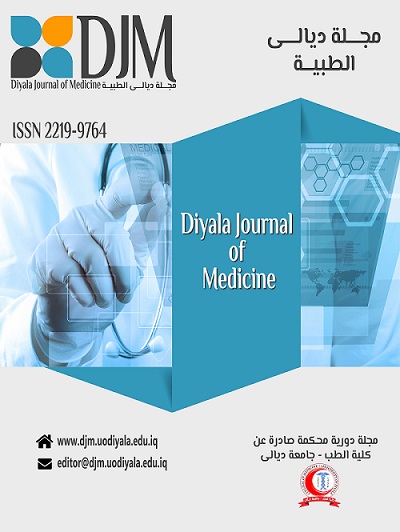Abstract
Background: Pomegranate (Punica granatum) is an edible fruit that has been described as a
medical and therapeutic functional food in the Middle East and the Mediterranean.
Objective: To investigate the use of serum creatinine (Cr) level and creatine kinase (CK)
activity as indicators for gingival wound healing process rate in rabbits, supplemented on
pomegranate seed extract (PSE).
Patients and Methods: A total of 45 rabbit males were used. They were divided into 3
groups; 5 rabbits as a baseline group that left without a buccal gingival wound. 20 rabbits (5
rabbits per each time interval) as a study group with buccal gingival wound with PSE
supplementation, and another 20 rabbits (5 rabbits per each time interval) as a control group
with gingival wound without PSE supplementation. A buccal gingival wound was created on
the lower right central incisor, and the suture was removed after (7) days. Blood samples
were collected for the baseline group and at time intervals; 3 hour, 1, 3, 7 days after creating
the wound for both control and study groups to determine serum Cr and serum CK.
Results: Serum Cr and CK significantly increased in all time intervals after gingival wounds, in
the control group compared with baseline values. Whereas the levels significantly increased in
rabbits receiving PSE at intervals of 3 hours, 1 and 3 days after gingival wound, they returned to
the baseline values, seven days after gingival wound incision.
Conclusion: Serum Cr and CK increase in the buccal gingival wound, while oral
supplementation of PSE can decline them to the baseline value after a period of time,
therefore these parameters can be used as indicators for gingival wound healing rate.
medical and therapeutic functional food in the Middle East and the Mediterranean.
Objective: To investigate the use of serum creatinine (Cr) level and creatine kinase (CK)
activity as indicators for gingival wound healing process rate in rabbits, supplemented on
pomegranate seed extract (PSE).
Patients and Methods: A total of 45 rabbit males were used. They were divided into 3
groups; 5 rabbits as a baseline group that left without a buccal gingival wound. 20 rabbits (5
rabbits per each time interval) as a study group with buccal gingival wound with PSE
supplementation, and another 20 rabbits (5 rabbits per each time interval) as a control group
with gingival wound without PSE supplementation. A buccal gingival wound was created on
the lower right central incisor, and the suture was removed after (7) days. Blood samples
were collected for the baseline group and at time intervals; 3 hour, 1, 3, 7 days after creating
the wound for both control and study groups to determine serum Cr and serum CK.
Results: Serum Cr and CK significantly increased in all time intervals after gingival wounds, in
the control group compared with baseline values. Whereas the levels significantly increased in
rabbits receiving PSE at intervals of 3 hours, 1 and 3 days after gingival wound, they returned to
the baseline values, seven days after gingival wound incision.
Conclusion: Serum Cr and CK increase in the buccal gingival wound, while oral
supplementation of PSE can decline them to the baseline value after a period of time,
therefore these parameters can be used as indicators for gingival wound healing rate.
Keywords
creatine kinase.
creatinine
gingival wound healing
Punicagranatum seed extract
